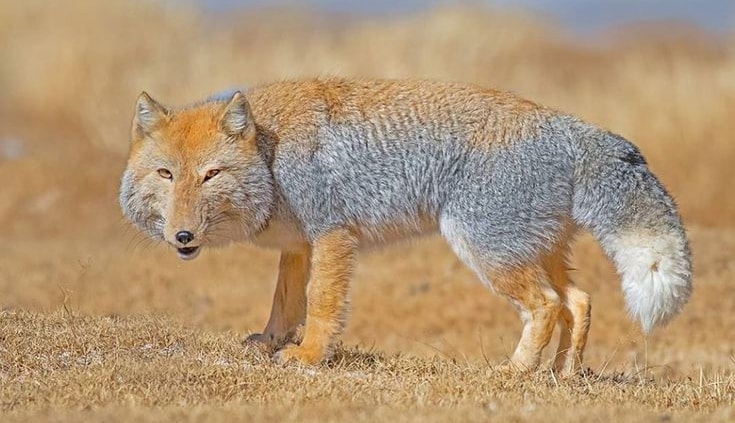With its uniquely square-shaped face and small, triangular ears set close to its head, the Tibetan fox (Vulpes ferrilata) has an appearance that really sets it apart. Not to mention, its very peculiar facial expression that seems to be conveying looks of disapproval…or annoyance! Its intense stare make it seems like it’s totally unimpressed with your not-so-funny jokes.
Also known as the Tibetan sand fox, and Wa or Wamo in Tibetan, it is a species of true fox endemic to the high altitude grassland plains of the Tibetan Plateau in western China, the Ladakh plateau in northern India, and in Sikkim and Bhutan, up to elevations of about 5,300 m (17,400 ft). It can also be found in the treeless slopes of Nepal, north of the Himalayas. These foxes primarily inhabit semi-arid to arid grasslands, well away from humans or from heavy vegetation cover.
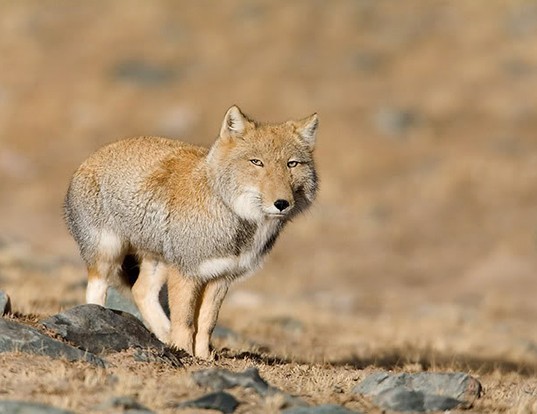
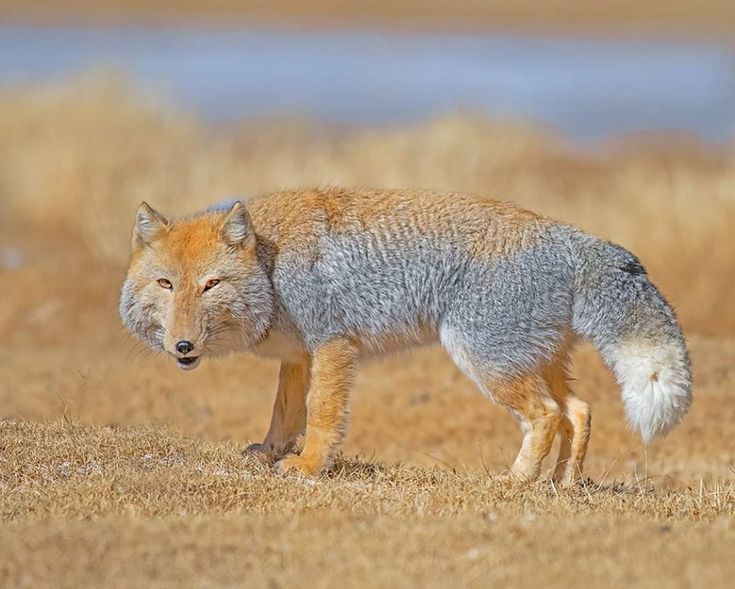
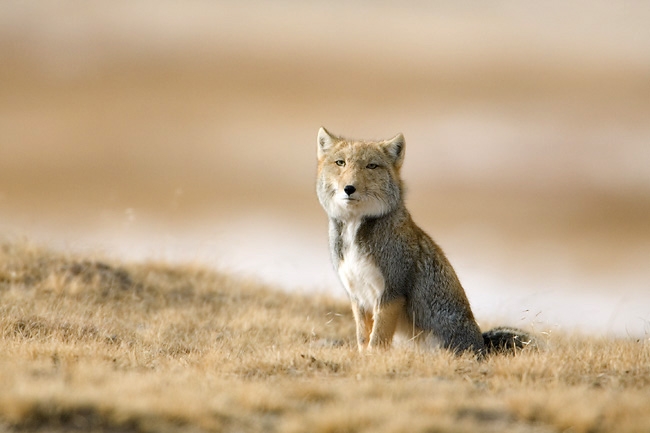
Credit: Milo Burcham
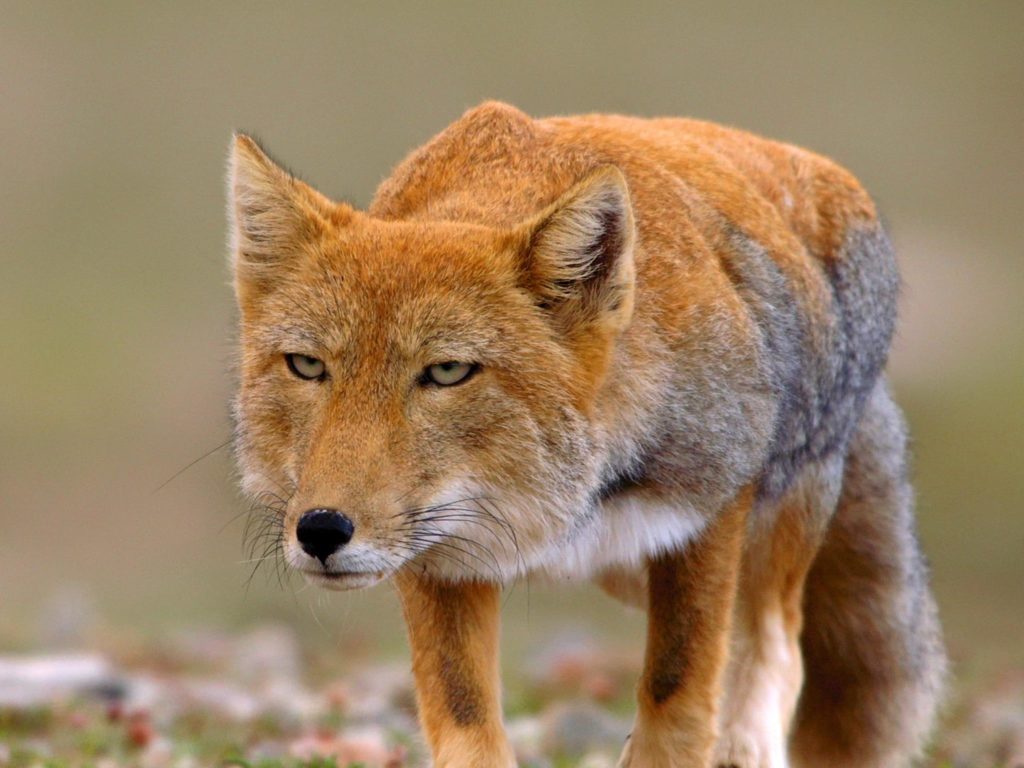
The Tibetan fox is small and compact, with soft, dense fur with a gray undercoat and a white underbelly. Its thick fur protects it from the winds of the high mountains. The coat ranges in color from black, to brown and rusty-colored, to yellowish on the neck and back. It possesses a tawny band on the dorsal region, a bushy tail with a white tip and its short ears are tan to grayish tan on the back.
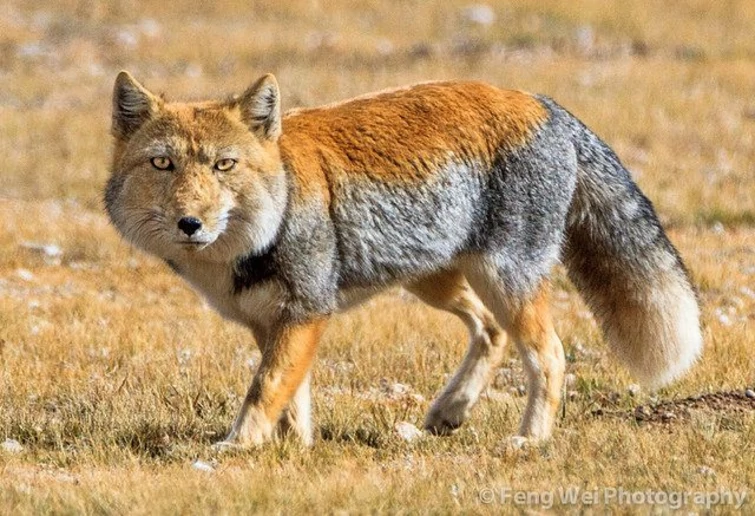
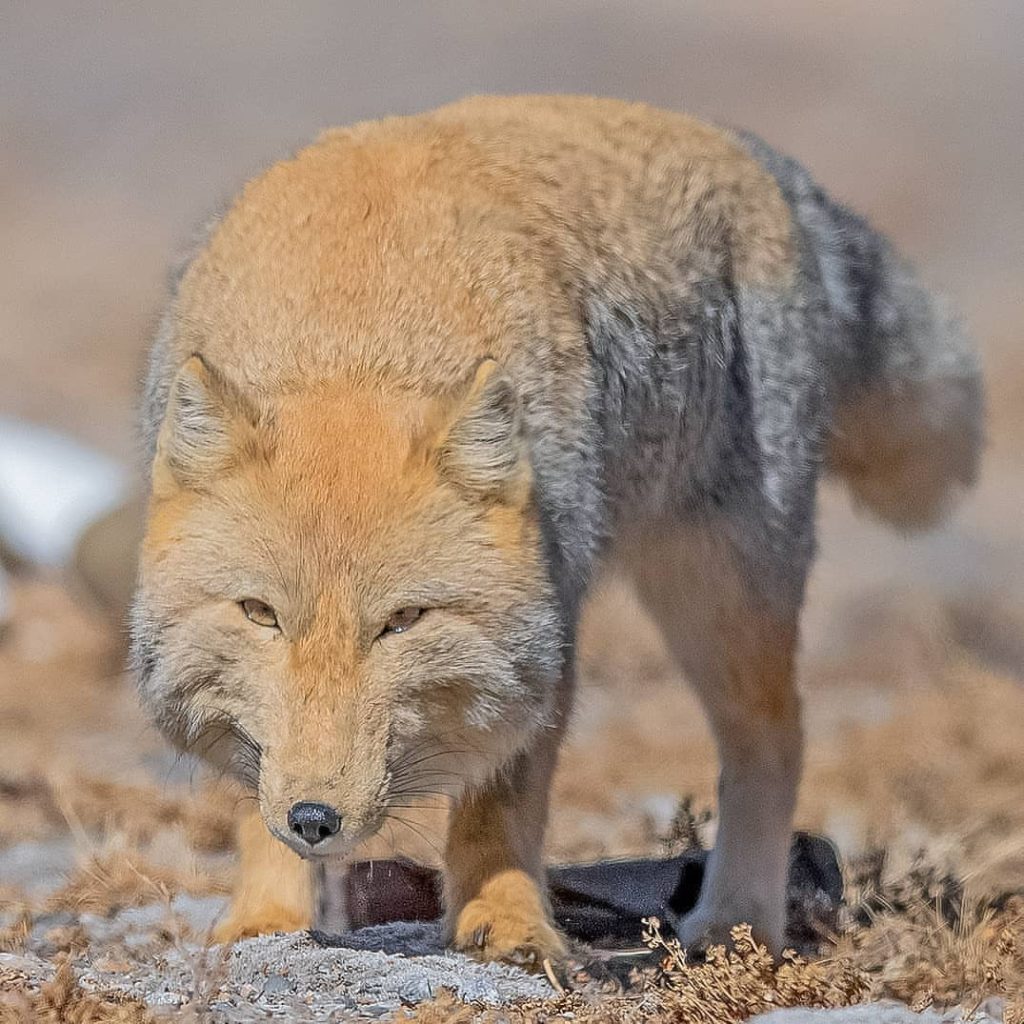
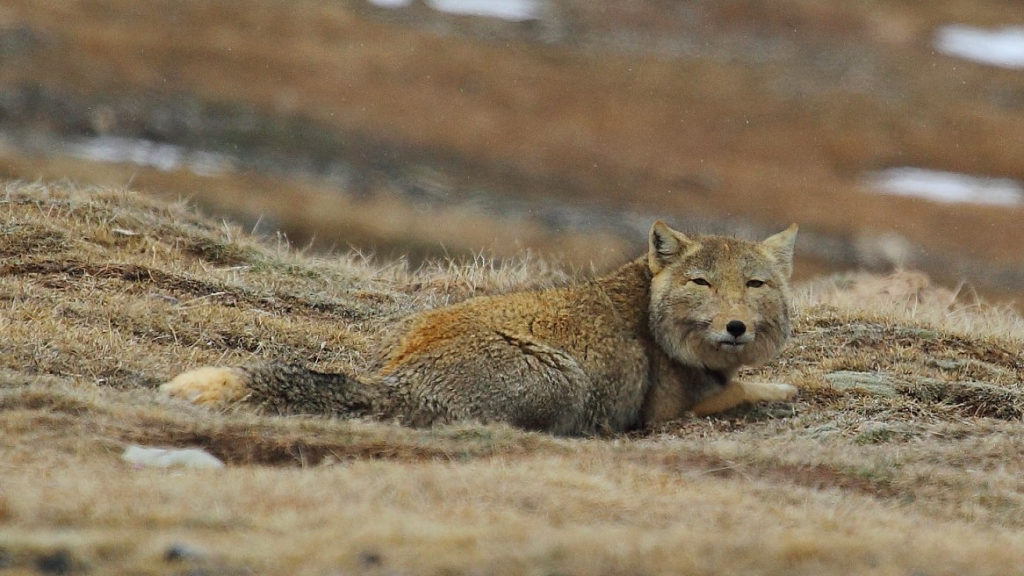
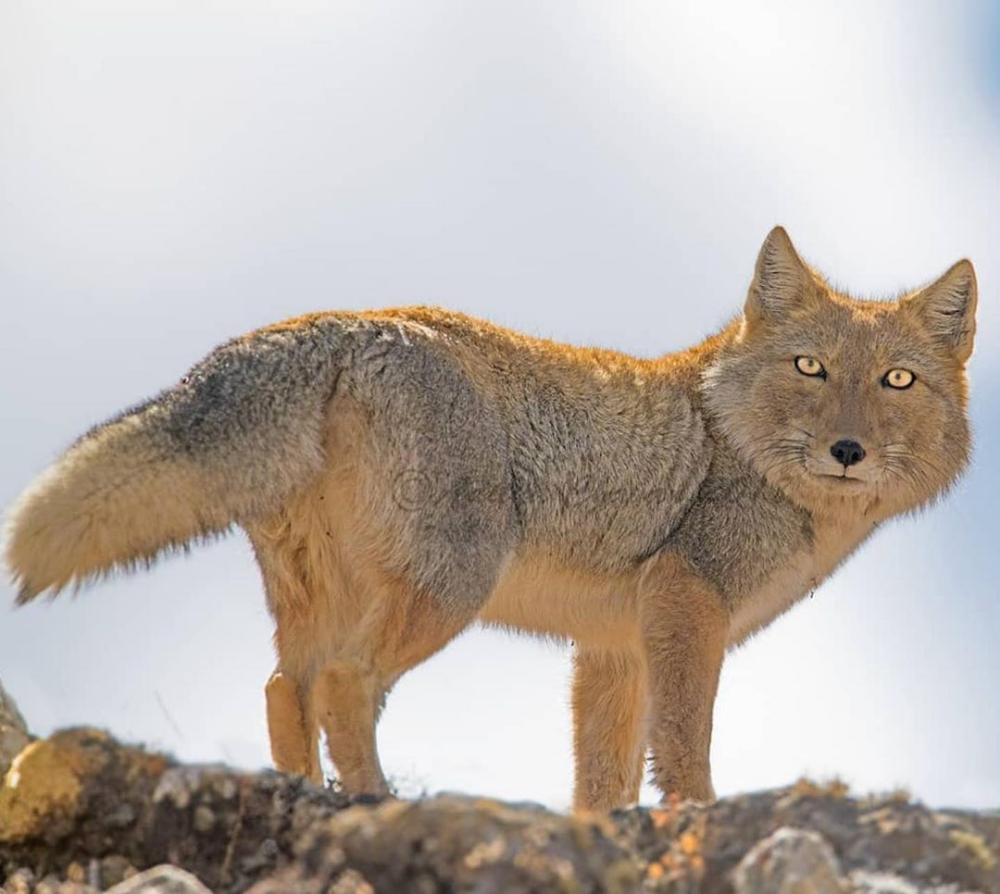
From nose to tail, an adult Tibetan fox measures between 60 and 70 cm (24 and 28 in), with the tail an additional 29 to 40 cm (11 to 16 in) in total length. It usually weighs between 4 and 5.5 kg (8.8 and 12.1 lb). The Tibetan fox has an elongated muzzle in comparison to most fox species and its teeth are well-developed with extraordinarily long canines and narrow maxilla. It has a very acute sense of hearing, making it an excellent hunter.
Read also: Beautiful Zen Foxes Are Photographed Enjoying Some Peaceful Time In The Wild

Credit: Staffan Widstrand
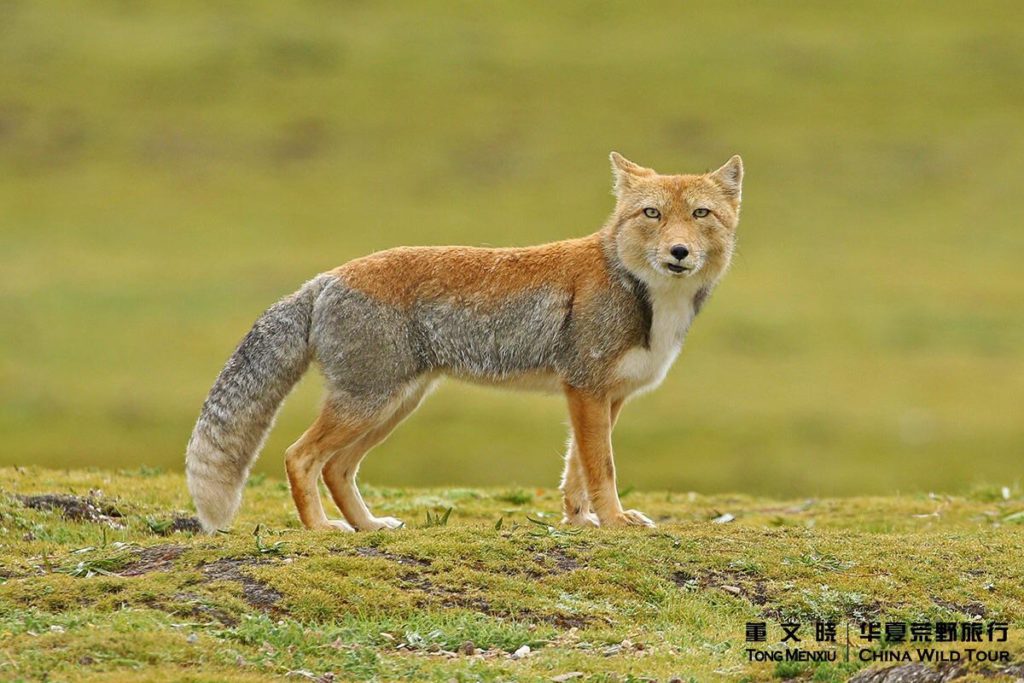
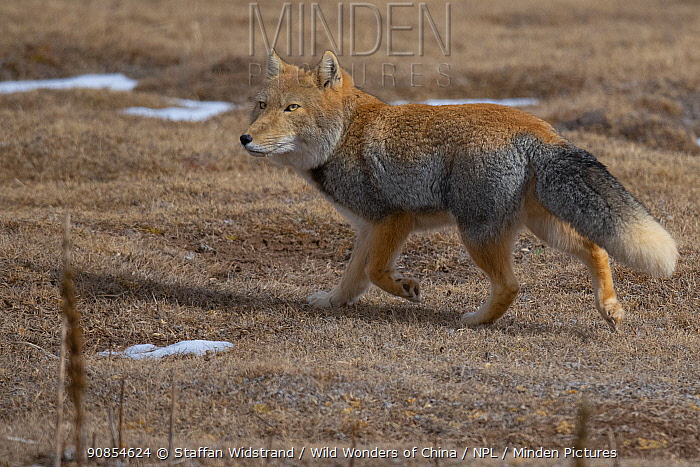
Credit: Staffan Widstrand
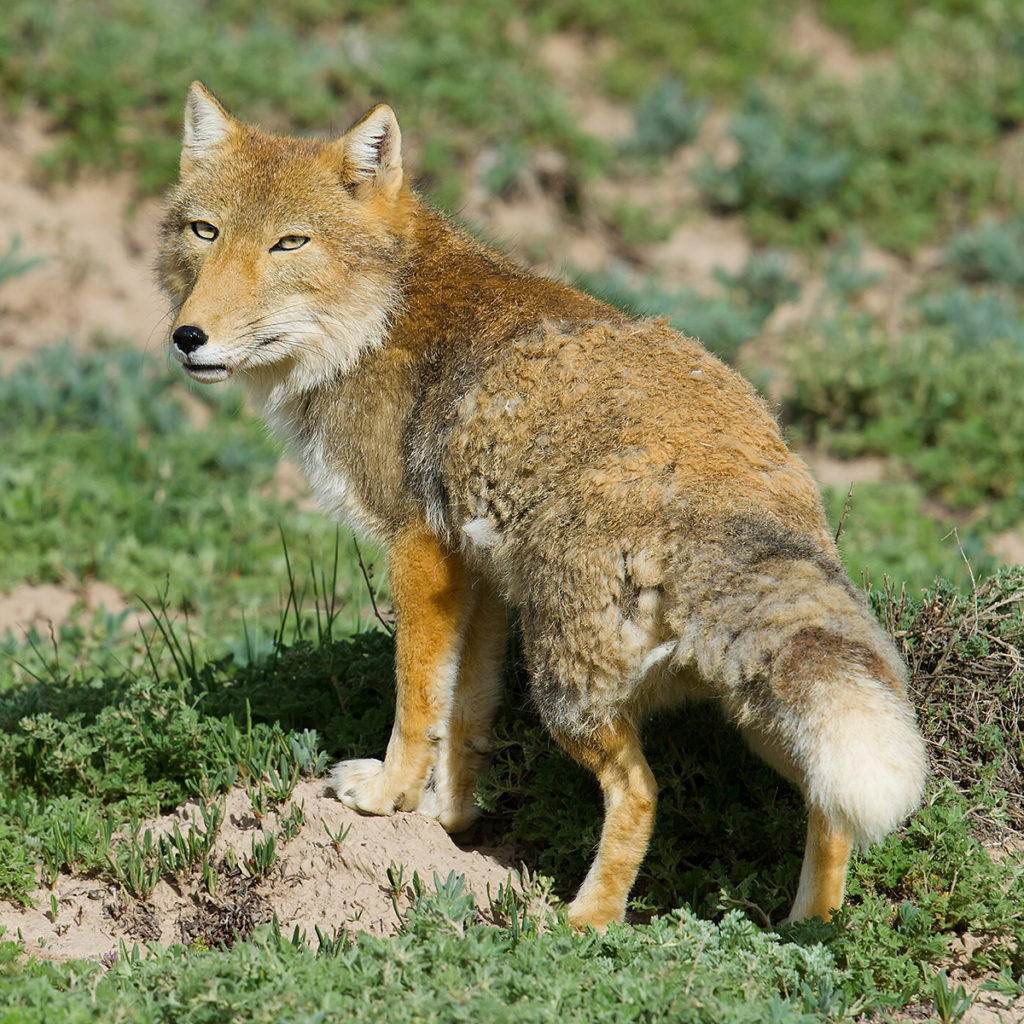
This carnivorous mammal primarily preys on Plateau pikas, but it also hunts other small animals like rodents, lizards, woolly hares, birds and marmots. As well, it scavenges on the carcasses of Tibetan antelopes, musk deer, blue sheep and livestock. Being mostly a solitary critter, it also hunts by day as its main prey, pikas, are diurnal. Tibetan foxes may even form commensal relationships with brown bears during hunts for pikas. The bears dig out the pikas, and as the small animals try to escape, the foxes are able to capture them.
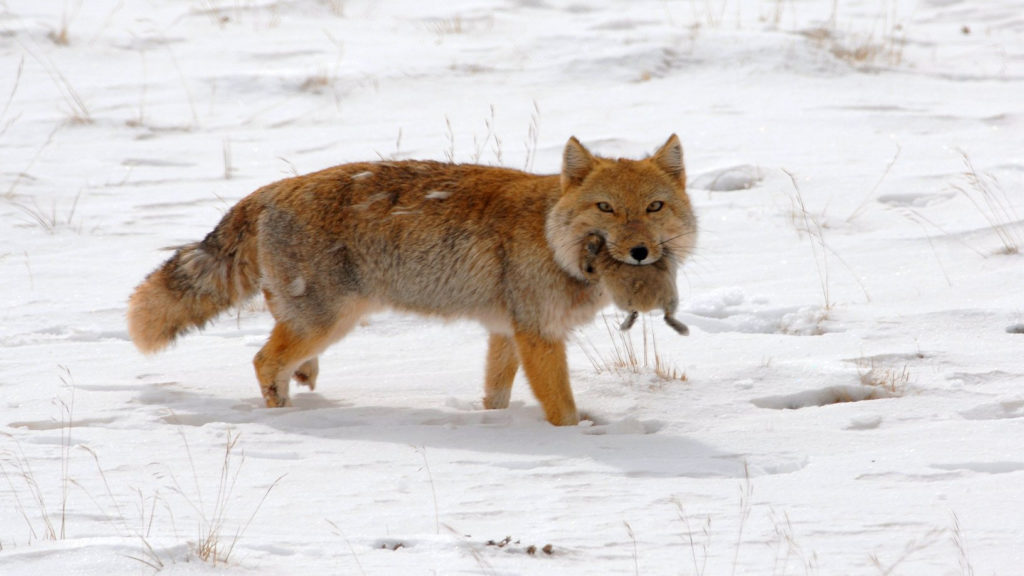
Credit: VCG Photo
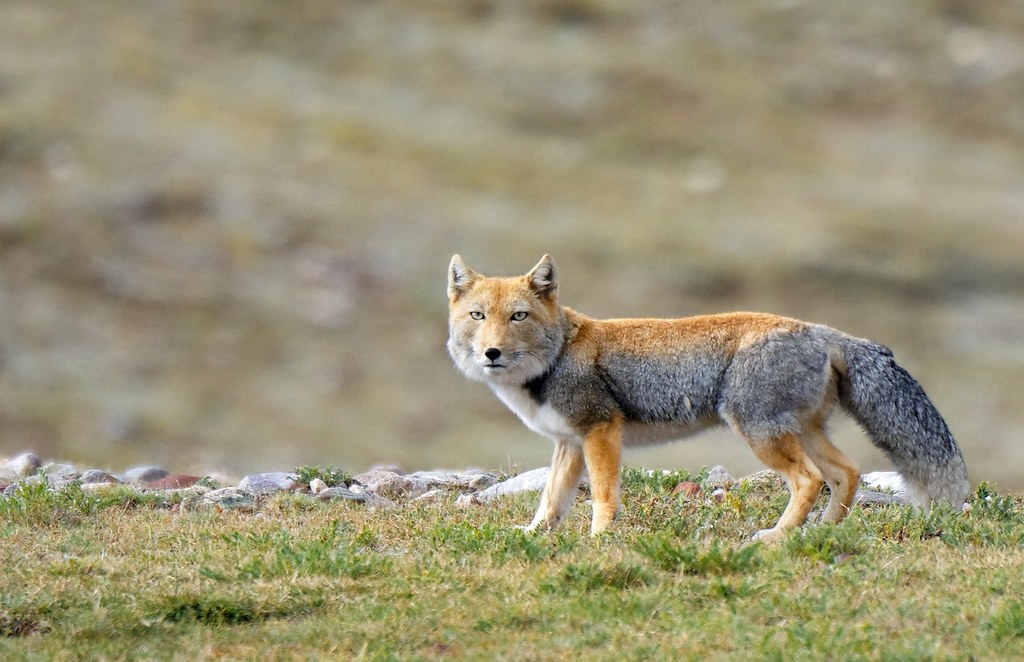
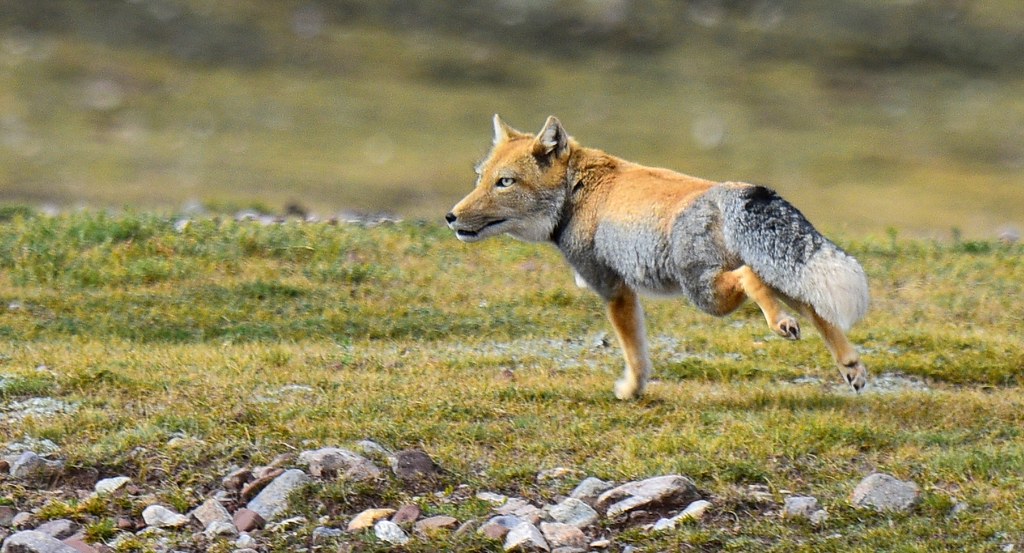
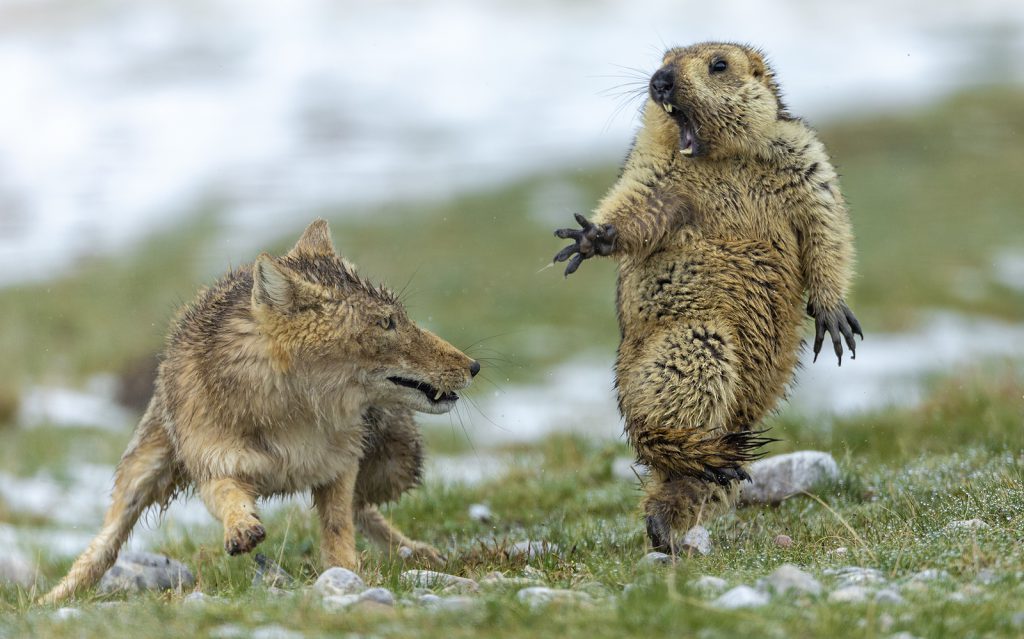
Credit: Yongqing Bao (Wildlife Photographer of the Year 2019 winner for this photo)
Tibetan foxes live in dens where they rest throughout the day, raise their young or hide when feeling threatened. Their burrows are dug at the base of boulders, at old beach lines and low slopes. These dens may have four entrances of about 25–35 cm in diameter. Although Tibetan foxes live in small family groups consisting of a mated pair and their young, they however prefer to spend their time solitarily. As a non-territorial species, several pairs may live close to each other and even share hunting grounds.
Read also: The Bat-eared Fox, A Stunning Fox From The African Savanna With Phenomenal Ears
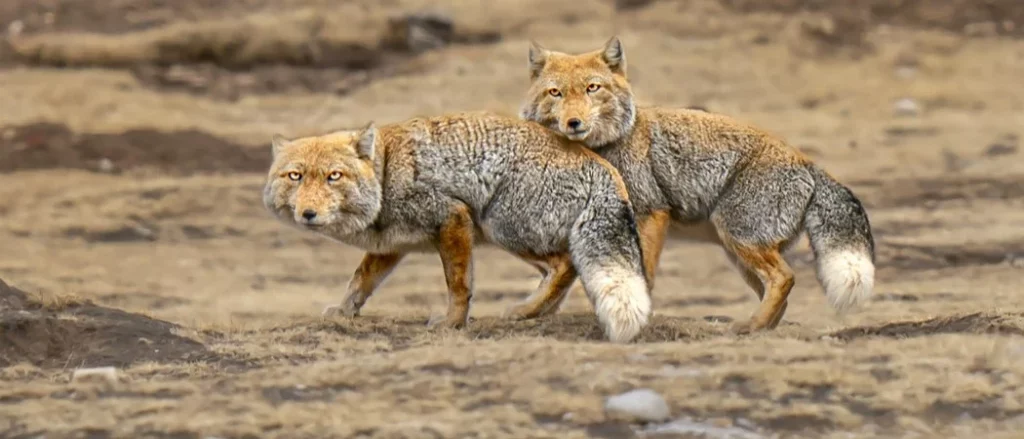
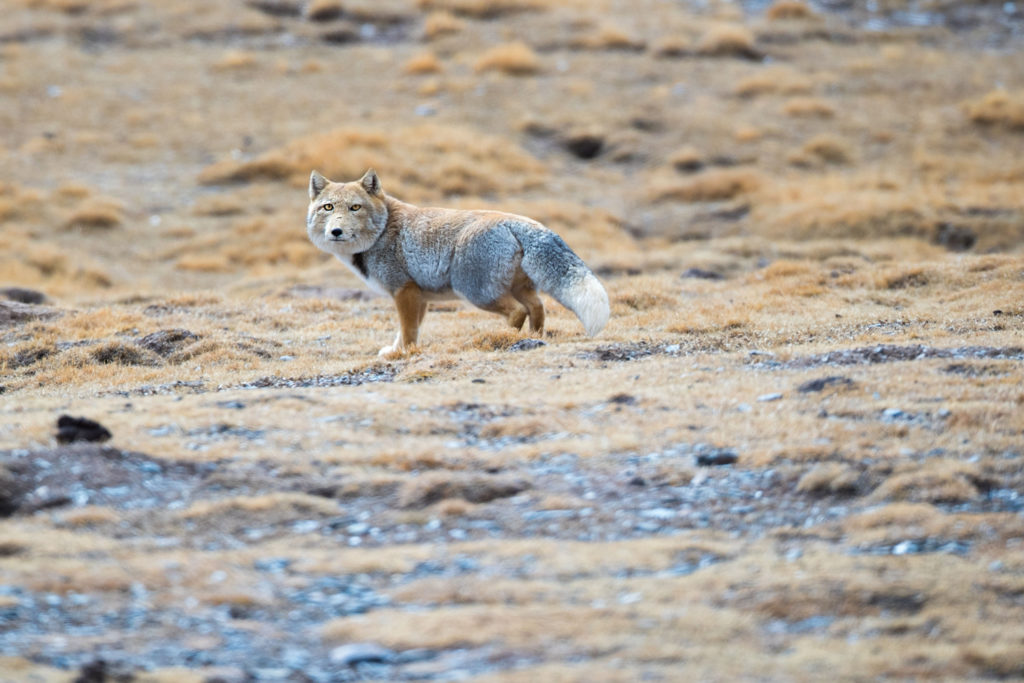
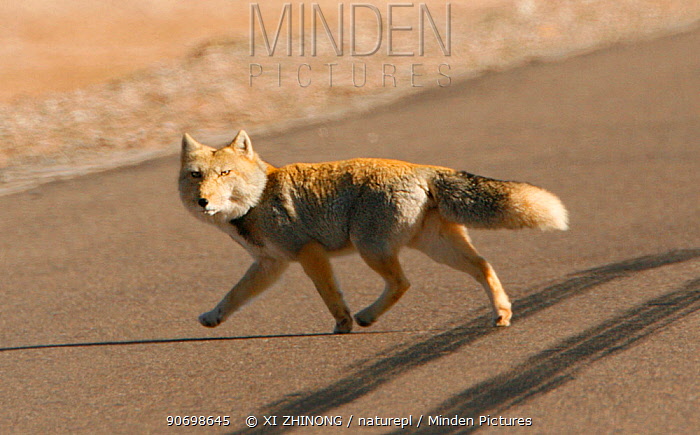
Credit: Xi Zhinong
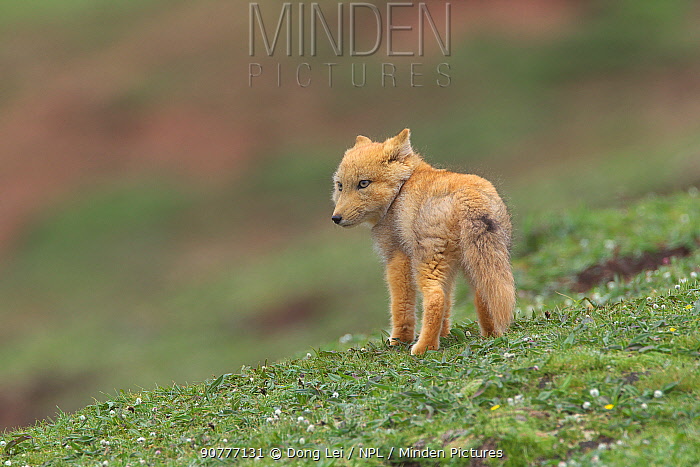
Credit: Dong Lei
Mating season starts in late February up to the end of March. The pair of foxes stay together and are life-long mates. When one of the pair dies, it is unknown if the other seeks another mate. They live, hunt and share the responsibility of raising the young ones together.
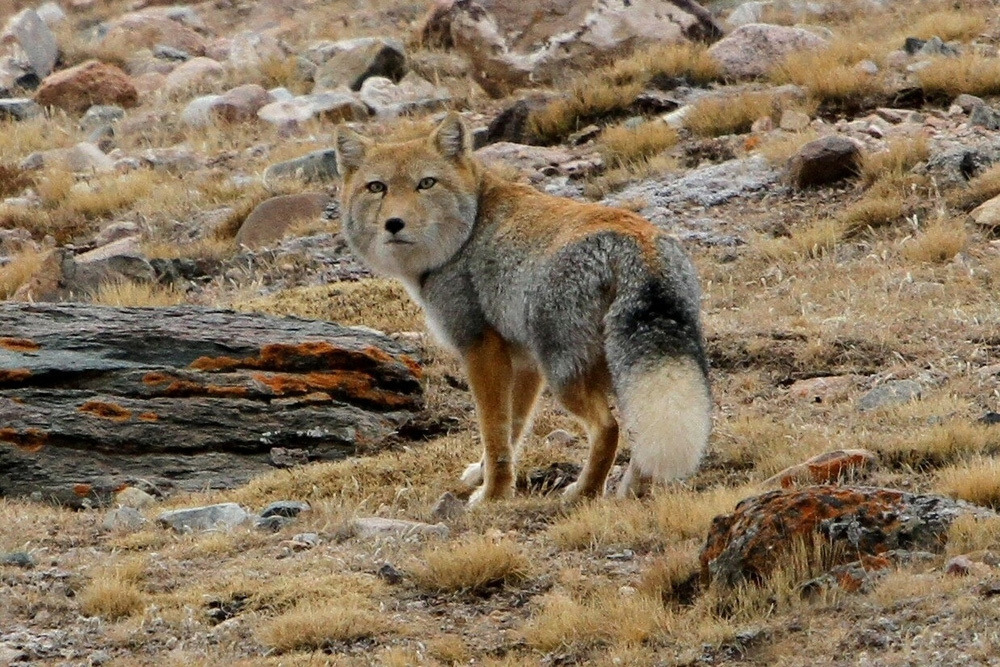


Credit: Craig Brelsford
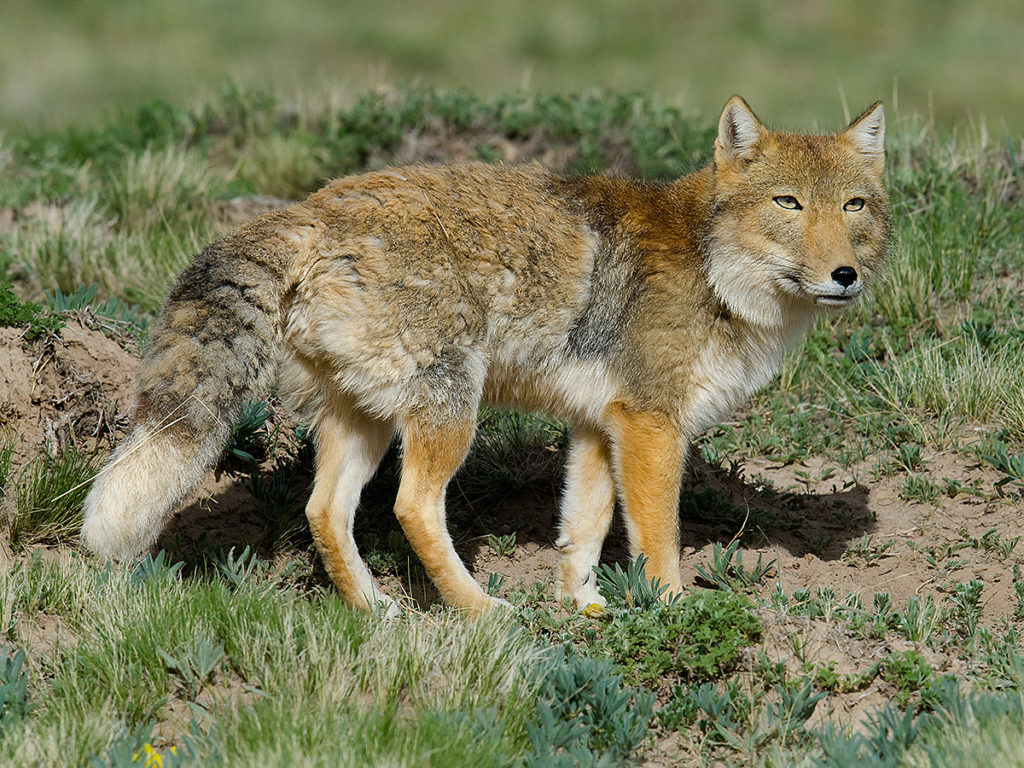
After a gestation period which is believed to be 50 to 60 days, 2 – 5 kits are born in a den, and they do not emerge from there for some weeks after birth. The young kits stay with their parents for about 8 to 10 months. After that time, they leave the den and wander off on their own in search of a partner. Since they are not overly territorial, they remain living in close quarters and share hunting grounds.
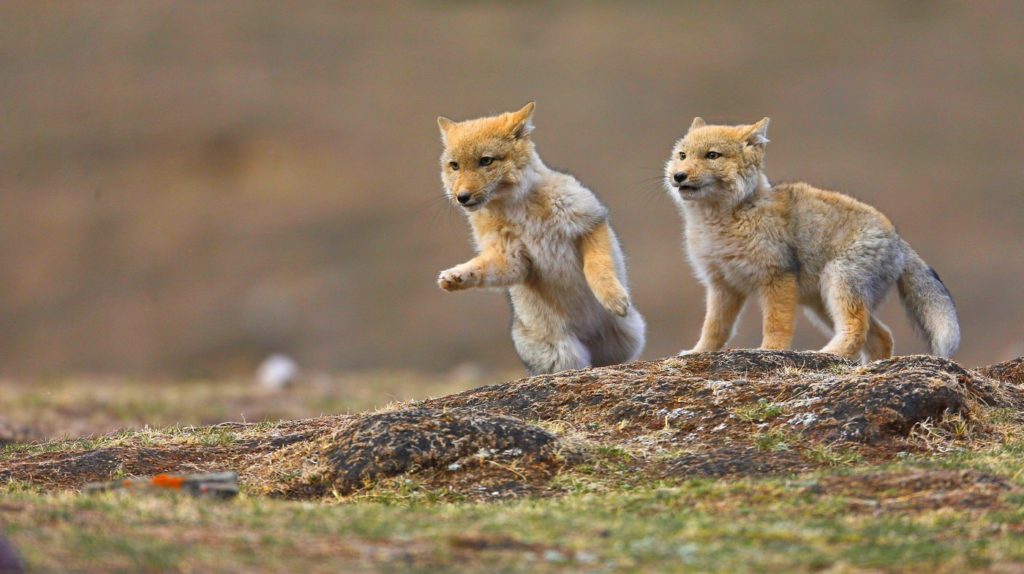
Credit: Yongqing Bao
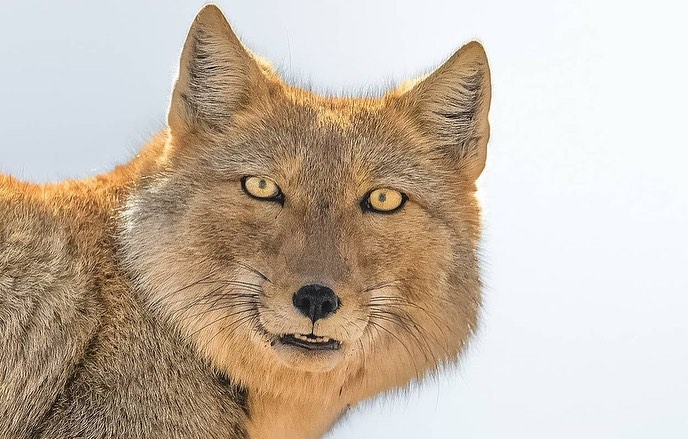
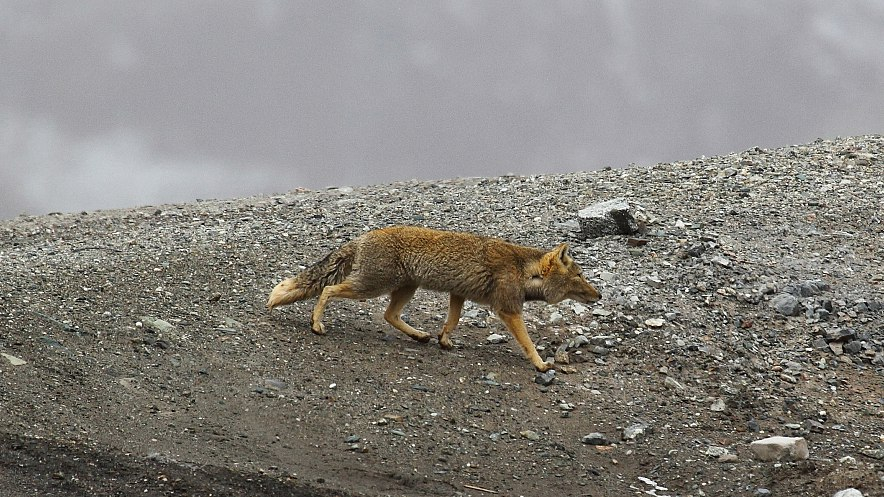
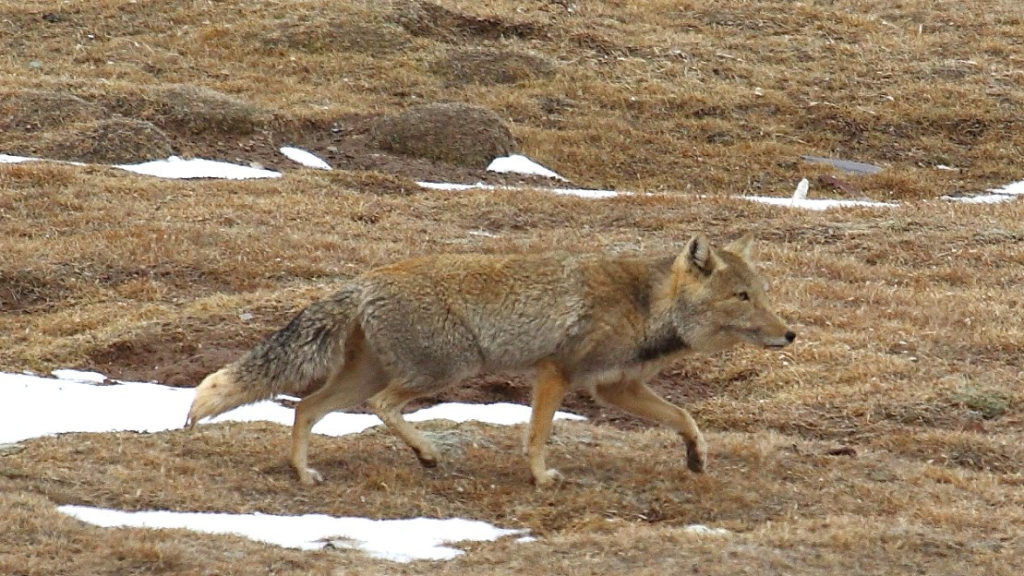
The Tibetan fox is listed as Least Concern in the IUCN Red List, on account of its widespread range in the Tibetan Plateau’s steppes and semi-deserts.
Read more articles:
- Silent Killers of the Sea: Fishing Nets and the Devastating Impact on Our Oceans
- Amazing Ability of Sharks to Regrow Their Dorsal Fins
- Mountain Marvels: 7 Architectural Wonders Built into Nature’s Slopes
- The Frilled Shark: Jaws of the Abyss and a Living Fossil
- 30 Christmas Rock Painting Ideas – Last minute DIY crafts for Christmas decor, gifts and stocking fillers

